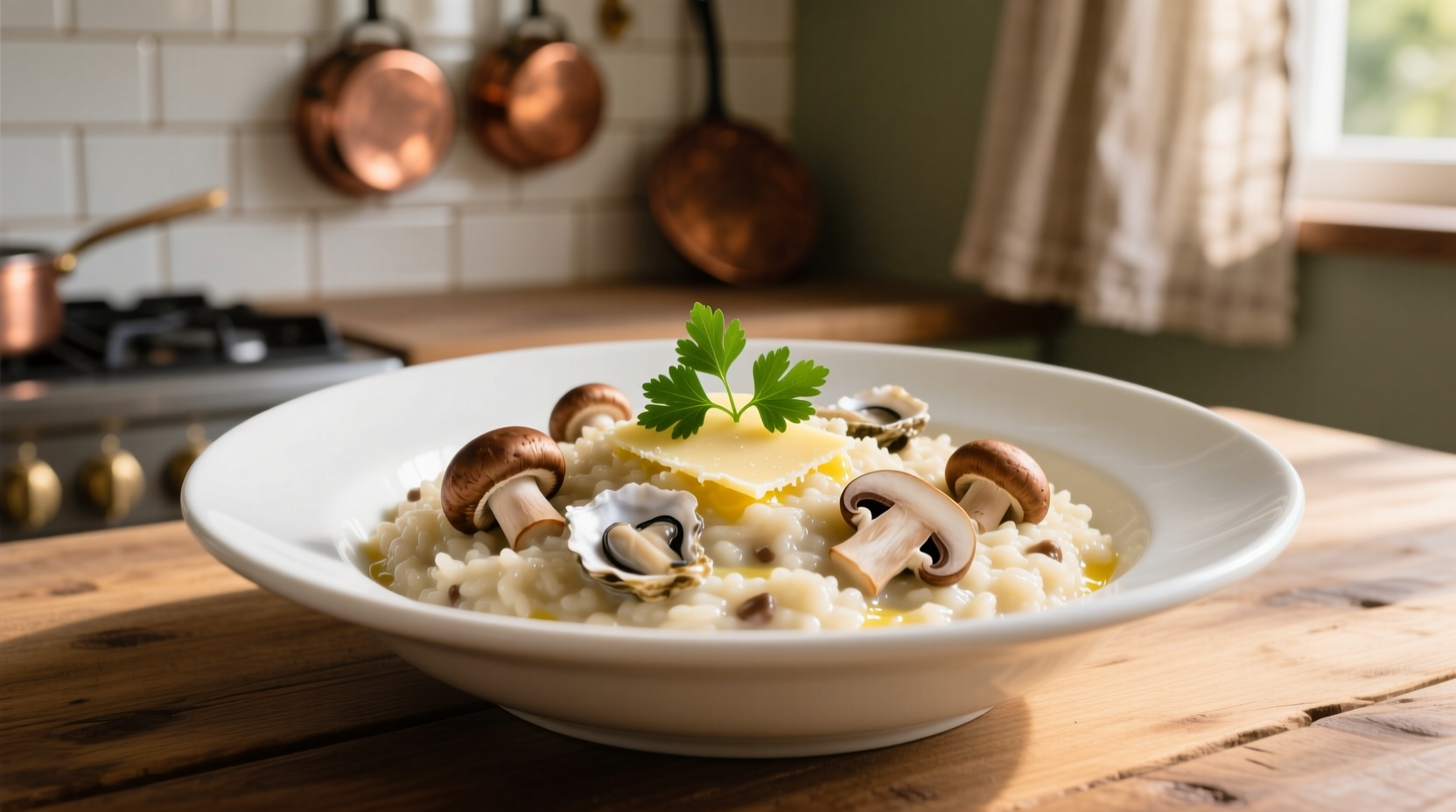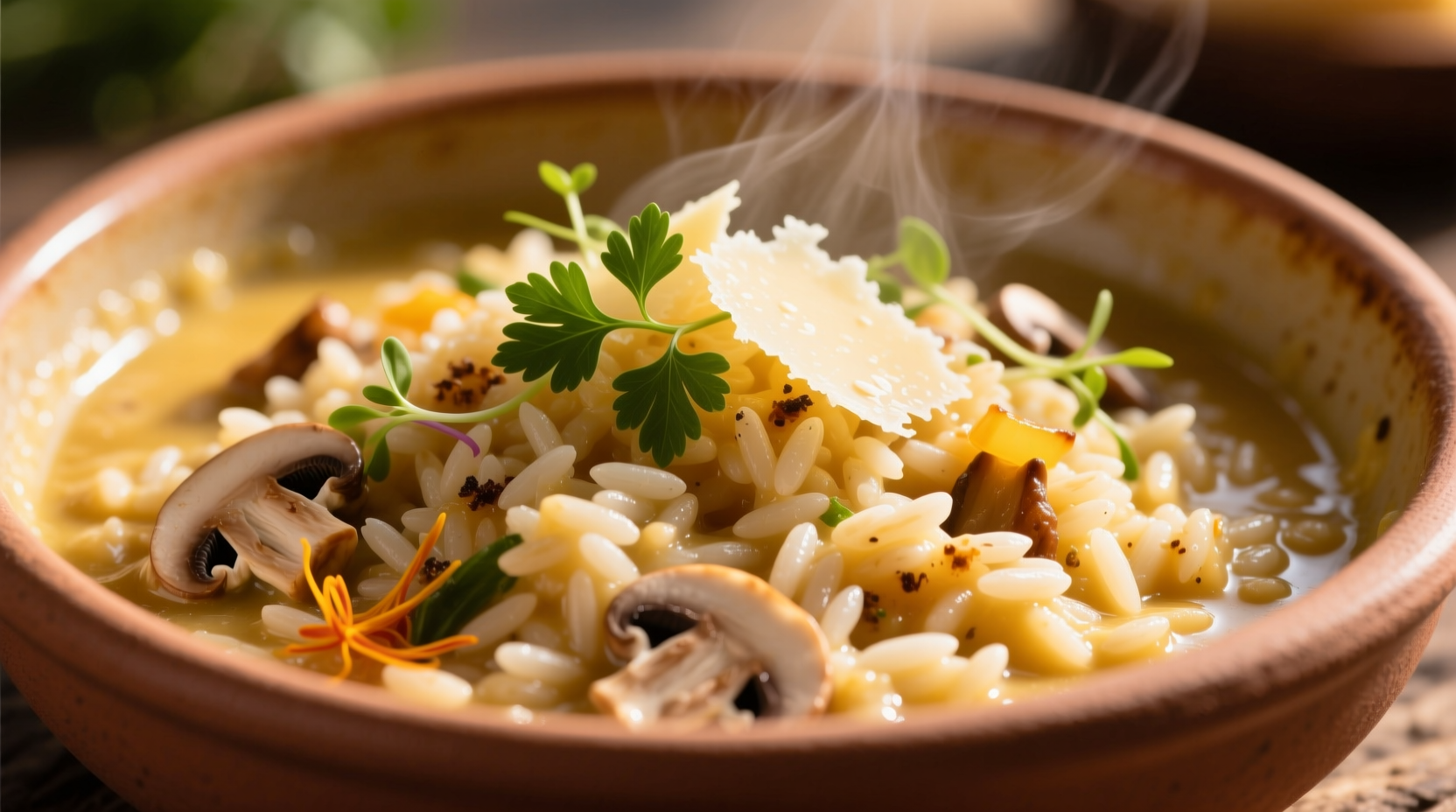The Essential Taste Profile of Authentic Risotto
When you take your first spoonful of well-prepared risotto, you'll experience a harmonious blend of textures and flavors that define this Italian classic. Unlike ordinary cooked rice, risotto delivers a unique culinary experience where creaminess coexists with individual grains maintaining their structure—a quality Italians call all'onda (wavy), referring to how the dish flows like a gentle wave when served.
Breaking Down Risotto's Flavor Components
The distinctive taste of risotto emerges from several key elements working in concert:
- Rice variety impact: Arborio, Carnaroli, or Vialone Nano rice varieties contain high amylopectin starch that releases gradually during cooking, creating creaminess without becoming gluey
- Broth foundation: A quality meat or vegetable broth provides savory depth and umami that permeates each grain
- Aromatic base: The soffritto (onion or shallot sautéed in butter) establishes the flavor foundation
- Wine acidity: A splash of dry white wine adds brightness that cuts through richness
- Dairy finish: Butter and Parmesan create silkiness while contributing nutty, salty notes
| Rice Dish | Texture Profile | Flavor Characteristics | Preparation Method |
|---|---|---|---|
| Risotto | Creamy exterior with al dente center (mantecatura technique) | Rich umami, subtle nuttiness, broth-infused depth | Gradual broth addition with constant stirring |
| Regular Steamed Rice | Separate, firm grains | Neutral, primarily showcases added seasonings | Simmered in measured water until absorbed |
| Paella | Dry, distinct grains with socarrat crust | Saffron-forward, smoky from pan bottom | One-pan cooking without stirring |
How Preparation Affects Risotto's Taste Experience
The cooking technique dramatically influences risotto's final flavor. Traditional preparation involves toasting the rice in fat before adding liquid, which enhances nuttiness through the Maillard reaction. The gradual addition of warm broth allows controlled starch release—add broth too quickly and you'll get porridge; too slowly and the rice becomes gummy.
Professional chefs emphasize the mantecatura (creaming) stage: removing from heat before the rice is fully cooked, then vigorously incorporating cold butter and cheese. This emulsification creates the signature creamy texture without actual cream. According to Accademia Italiana della Cucina, Italy's official culinary academy, "the perfect risotto should flow gently when served, never sit stiffly in the plate." 
Regional Variations and Their Flavor Impacts
While risotto originated in northern Italy, regional variations create distinct taste experiences:
- Risotto alla Milanese: Saffron-infused with beef marrow broth delivers floral notes and golden color
- Risotto ai Funghi: Wild mushroom varieties contribute earthy umami depth
- Seafood Risotto: Uses fish stock and incorporates briny seafood flavors
- Risotto alla Parmigiana: Extra Parmesan creates nuttier, saltier profile
The University of Gastronomic Sciences in Pollenzo, Italy conducted sensory analysis showing that properly executed risotto registers higher on the umami scale than ordinary rice dishes due to the broth absorption process and cheese incorporation. Their research confirms that the gradual cooking method allows for maximum flavor compound extraction from ingredients.
Common Misconceptions About Risotto's Flavor
Many people wonder is risotto supposed to taste like porridge? The answer is no—authentic risotto maintains distinct grains while achieving creaminess. Others ask does risotto have a strong flavor on its own? Actually, risotto serves as a canvas; its subtle base allows featured ingredients like truffles, seafood, or seasonal vegetables to shine.
When properly made, risotto shouldn't taste overwhelmingly of cheese or butter—that's a sign of overcompensation for poorly executed technique. The best risottos showcase the rice's inherent qualities enhanced by supporting ingredients.
How to Identify Authentic Risotto Flavor
When evaluating risotto quality, look for these sensory markers:
- Texture balance: Creamy but with slight resistance when biting (all'onda)
- Flavor layering: Distinct progression from buttery beginning to savory finish
- Temperature retention: Properly emulsified risotto stays warm longer
- Ingredient clarity: Primary flavor components should be identifiable
Food scientists at the University of Bologna have documented that the ideal risotto registers between 6.8-7.2 on the pH scale—slightly acidic from the wine addition—which optimizes flavor perception according to their published research.
Why Risotto Tastes Different From Other Rice Dishes
The unique taste stems from risotto's specific preparation method. Unlike pilaf or steamed rice where grains remain separate, risotto's constant stirring releases starch gradually, creating a cohesive yet textured dish. The rice variety matters too—Arborio contains about 19% amylose and 81% amylopectin starch, creating that signature creamy-but-chewy texture impossible with long-grain rice.
When comparing what does risotto taste like versus regular rice, the difference is substantial. Regular rice serves primarily as a neutral base, while risotto actively contributes flavor and texture to the dining experience. This explains why many diners describe risotto as more "satisfying" despite similar basic ingredients.
Practical Tips for Experiencing Authentic Risotto Flavor
To truly appreciate what does traditional risotto taste like, consider these recommendations:
- Order risotto as a first course (primo piatto) in Italian restaurants rather than as a side dish
- Ask about the rice variety used—Carnaroli generally produces superior texture to Arborio
- Notice whether the dish flows gently on the plate (all'onda)
- Pair with a crisp Italian white wine like Pinot Grigio that complements without overwhelming
Remember that authentic risotto shouldn't arrive piping hot—the ideal serving temperature is around 65°C (149°F), allowing flavors to express fully without numbing your palate. This precise temperature control represents why many chefs consider risotto the ultimate test of culinary skill.











 浙公网安备
33010002000092号
浙公网安备
33010002000092号 浙B2-20120091-4
浙B2-20120091-4